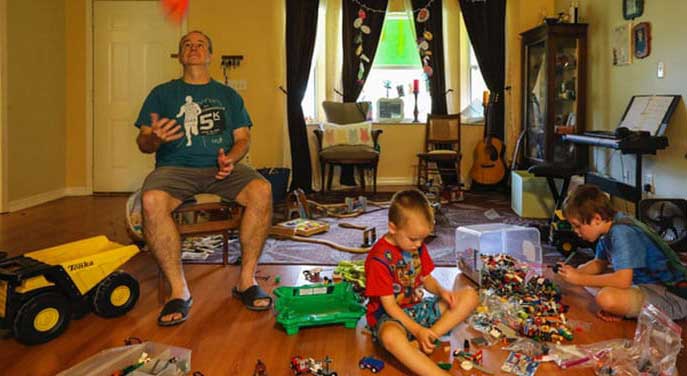 The COVID-19 pandemic has taken countries, governments and people by surprise. Most of us weren’t prepared to face this crisis.
The COVID-19 pandemic has taken countries, governments and people by surprise. Most of us weren’t prepared to face this crisis.
Most Western countries initially refused to panic and wanted to manage the situation like other illnesses such as the flu. But the outbreaks in hospitals and other medical facilities in most countries led to true chaos, which led governments and authorities to impose restrictions and lockdowns.
Even those who have efficient welfare systems in place were strongly impacted and some made out even worse than expected. As of May of this year, France had 1,660 COVID-19 deaths per million people, a little less than the United States (1,800), but more than Sweden (1,400) and Canada (660). Considering that France is the world’s champion of taxation (French tax revenues represent nearly half of its gross domestic product (in Canada tax revenues represent 33 per cent of the GDP), the result is intensely disappointing.
Accordingly, some lessons must be learned from this situation.
The pandemic was a time of crisis. In this type of situation, it’s necessary to quickly mobilize significant resources to face the problem and protect people. Some leaders called this crisis a war; while this comparison is exaggerated considering the nature of the threat, there can be some common points between managing a pandemic and directing a military operation.
 For example, China constructed two prefab hospitals with capacity for 2,600 patients in Wuhan within a week of the COVID-19 outbreak. The success of this strategy was attributed to China’s experience since 2003 in building prefab structures.
For example, China constructed two prefab hospitals with capacity for 2,600 patients in Wuhan within a week of the COVID-19 outbreak. The success of this strategy was attributed to China’s experience since 2003 in building prefab structures.
The use of field hospitals can be a real asset. But too few have been deployed in Western countries. New York City opened one in spring 2020; so did Poland, which turned a sports stadium into a 500-bed field hospital in the fall of 2020.
Due to the high number of hospitalized people, those few field hospitals weren’t enough.
The military can certainly be helpful in this type of mission. In April 2021, the Canadian government announced it would deploy the Canadian Armed Forces in Ontario, and pay for the redeployment of the Canadian Red Cross to support and relieve staff in medical care facilities.
Armies often have reserve forces, which are intended to be mobilized in time of crisis. In Canada, there are 18,500 to 21,000 reservists. Troops can be formed to do the essential work, allowing medical staff to concentrate their work on more vital aspects of treatment.
Unfortunately, this solution wasn’t used. Worse, the Canadian army has a shortfall of several thousand troops due to COVID, which forced the army to curb its recruitment and training of recruits.
A guide to looking beyond the COVID-19 crisis by Gerry Chidiac
Instead of applying these strategies at an extensive level, the primary strategy was to impose restrictions on people and to put countries under lockdowns to save their health-care systems. One of the leading causes of the lack of initiative was bureaucratic inertia.
In most countries, crisis management is centralized and bureaucratic. Centralization can be helpful in creating a cohesive response. But bureaucracy can be a significant obstacle.
A lot of regulations have prevented people or institutions from acting. For example, at the beginning of this crisis, the Food and Drug Administration in the United States required a painful approval process to bring any test to market. In the United Kingdom, some medics like dentists had to complete a lot of paperwork to gain approval to give the jabs.
Bureaucracy tends to be slow. In the current situation, it needed to be fast. This crisis can lead to a culture shift for the administration. But regulations have blocked many possible reactions and initiatives.
To improve response in times of crisis, red tape needs to be removed.
Alexandre Massaux is a research associate with the Frontier Centre for Public Policy.
Alexandre is a Troy Media Thought Leader. For interview requests, click here.
The views, opinions and positions expressed by columnists and contributors are the authors’ alone. They do not inherently or expressly reflect the views, opinions and/or positions of our publication.
© Troy Media
Troy Media is an editorial content provider to media outlets and its own hosted community news outlets across Canada.

